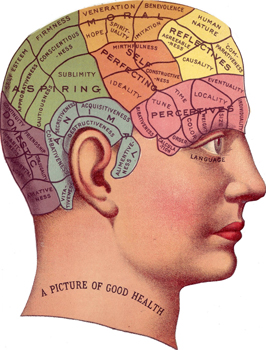 Can you remember life before the Corona Cooties came to town? What is your very first memory? Say it quietly to yourself in case it’s embarrassing. Take a walk down memory lane. We are going to compare what Greek mythology and medical science say about memory. Neurologists say your memories hang out in various socially distanced parts of your brain. The brain is a wad of tissues and electrical charges that weighs about 3 pounds. Some people use their brains more than others. If you are of a certain age, your memory lets you call up the cigarette slogans from a half-century ago — like “Kent with the Micronite filter refines away harsh flavor, refines away harsh taste.”
Can you remember life before the Corona Cooties came to town? What is your very first memory? Say it quietly to yourself in case it’s embarrassing. Take a walk down memory lane. We are going to compare what Greek mythology and medical science say about memory. Neurologists say your memories hang out in various socially distanced parts of your brain. The brain is a wad of tissues and electrical charges that weighs about 3 pounds. Some people use their brains more than others. If you are of a certain age, your memory lets you call up the cigarette slogans from a half-century ago — like “Kent with the Micronite filter refines away harsh flavor, refines away harsh taste.”
Fun fact: Kent’s Micronite filter was asbestos.
Your brain has little nerve cells called neurons that keep sending electrical charges to each other. When you experience something, the nerve cells get excited and tell their neighbors about it. These electrical charges end up in various parts of your brain to ultimately form memories. The amygdala of your brain’s temporal lobe is shaped like an almond. It attaches emotions to memories. It is the basis for the candy Almond Joy’s slogan, “Sometimes you feel like a nut. Sometimes you don’t.” Next up is the hippocampus. Despite its name, the hippocampus is not where a hippopotamus goes to get a college degree. The hippocampus converts short-term memories into long-term memories. These ship out to the neocortex, where they reside permanently until you need them. Once the neocortex is called upon to produce a memory, it promptly forgets the name of the person you just met.
All that medical stuff is a bit on the dry side. Greek mythology provides the real truth about memory. The goddess of memory is Mnemosyne. Minnie, as her posse calls her, is the reason you can remember where you were on 9-11, the day Elvis died and when UNC last beat Dook. Minnie came from sturdy stock. Her daddy was Uranus, and her mom was Gaea. They were the original heaven and Earth of mythology. Zeus took a liking to Minnie and spent nine nights with her playing house and making whoopee. Minnie got in the family way and gave birth to nonuplets, which is a fancy way of saying she had nine babies at once. These weren’t just nine ordinary babies, no sirree, Bob. These were the nine muses who inspire artists, musicians and various creative types who have found a way to make a living without working. The muses invented music, language, dance, human senses, planets and the Greek alphabet.
Minnie was a first-responder in the Underworld of the dead in Hades. She kept watch over a pool and the River Lethe in the Underworld. When a dead person showed up in the Underworld, Minnie would get them to drink from the River Lethe, which would cause them to forget their past life above ground. The Greeks believed that the dead would end up getting reincarnated. If they had not forgotten their past lives, they might try to get their stuff back from their heirs and all manner of troubles would prevail. Hence, belly up to the River Lethe and have a swig. However, and there is always a however in mythology, there was another river in Hades named after Minnie called the Mnemosyne River. Drinking from it would cause the newly dead to be able to remember all of their past life, but it kept them from being reincarnated and going through all the troubles of life again.
So, who to believe about what memory is? The neurologists or Greek mythologists? It’s all Greek to me. You should make your own decision. The idea of memory has sold more records than you can shake a stick at. Who can forget Bob Hope singing, “Thanks for the memories”? The horror of the musical “Cats” song “Memory” sung by more Miss America contestants than can be heard without nausea: “Midnight not a sound from the pavement/Has the moon lost her memory.” Dean Martin singing “Memories Are Made of This”: “The sweet, sweet memories you gave to me/You can’t beat the memories you gave to me./” Mary Hopkins belting out “Those Were the Days”: “Those were the days my friend/We thought they’d never end/We’d sing and dance forever and a day.” John Lennon’s mournful “In My Life”: “There are places I’ll remember/All my life, though some have changed/Some forever, not for better/Some have gone, and some remain/With lovers and friends I still can recall /Some are dead, and some are living/In my life I’ve loved them all.” The “Whiffenpoof” song has the immortal lyrics: “We will serenade our Louie while life and voice shall last/Then we’ll pass and be forgotten with the rest/We are poor little lambs who have lost our way/Baa, baa, baa.”
The best song ever written about memory comes from Randy Newman, a little ditty called “Potholes.” Randy is pondering his fading memory due to aging and is thankful for it. Not only does he forget the good stuff, but more importantly, he forgets the bad stuff. He wrote: “God bless the potholes/Down on Memory Lane/Everything that happens to me now/Is consigned to oblivion by my brain.”
What was the point of this column?
I forget.